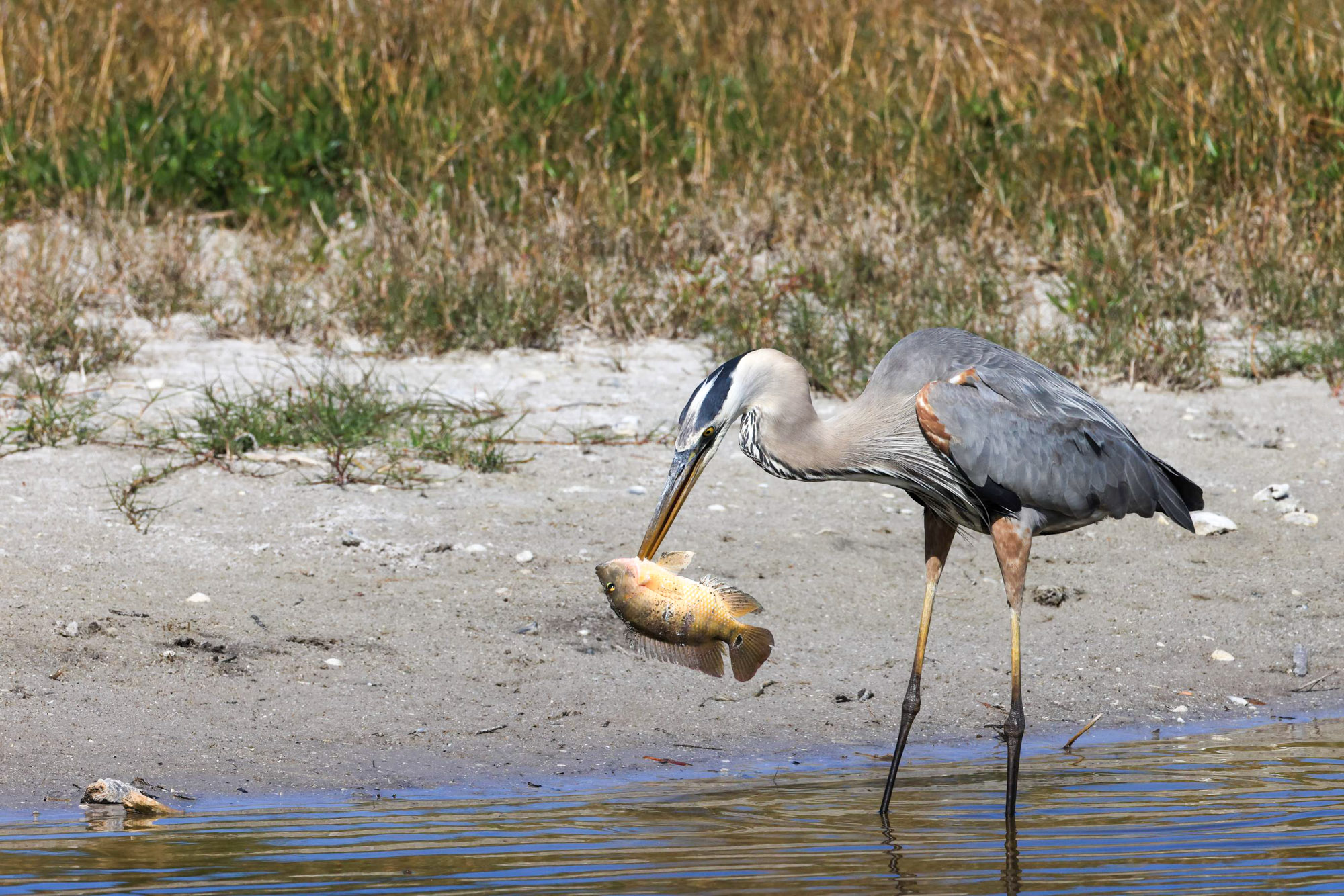Animal
Great blue heron
Ardea herodias
Unmistakable in appearance, the predominantly blue-gray Great blue heron is our largest heron, and a Florida resident. This elegant bird can be seen stalking its prey in wetlands and coastlines throughout the year. Often foraging alone, it uses its long legs to wade in the water, and its long neck and long yellow dagger-like bill to snatch up prey, and even impale larger fish. They eat a variety of prey including Fish, insects, reptiles, mammals, and even smaller birds. This species is also recognizable in flight. Unlike cranes and storks which fly with their necks outstretched, herons fly with their neck recoiled.
An interesting fact: Herons and egrets have a special serrated toenail on their center toe, which they use as a comb to keep their plumage in good condition.
